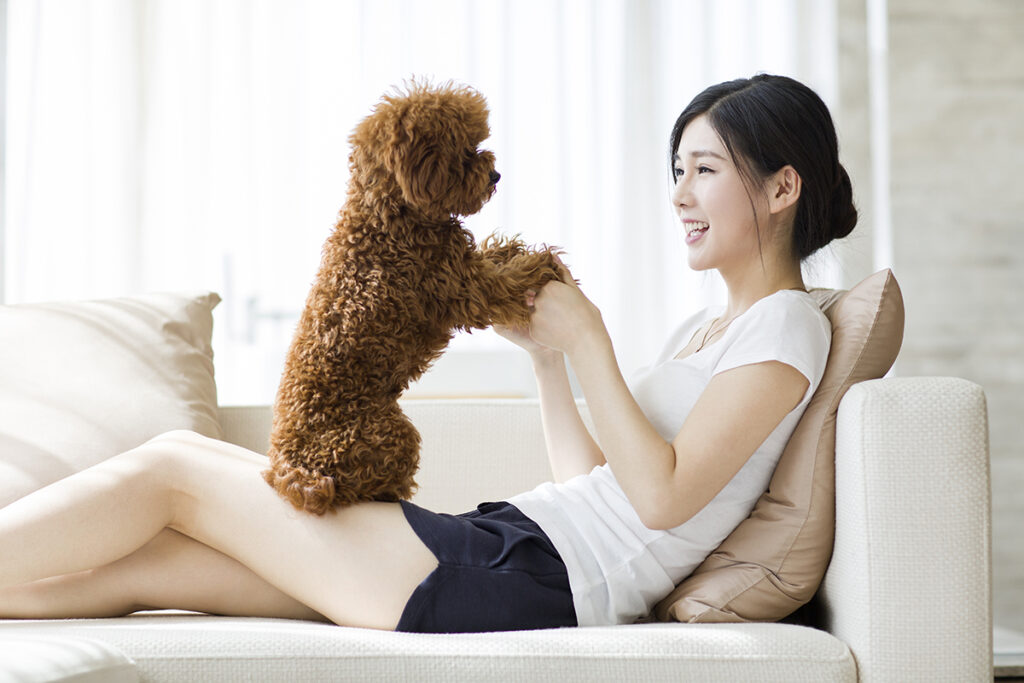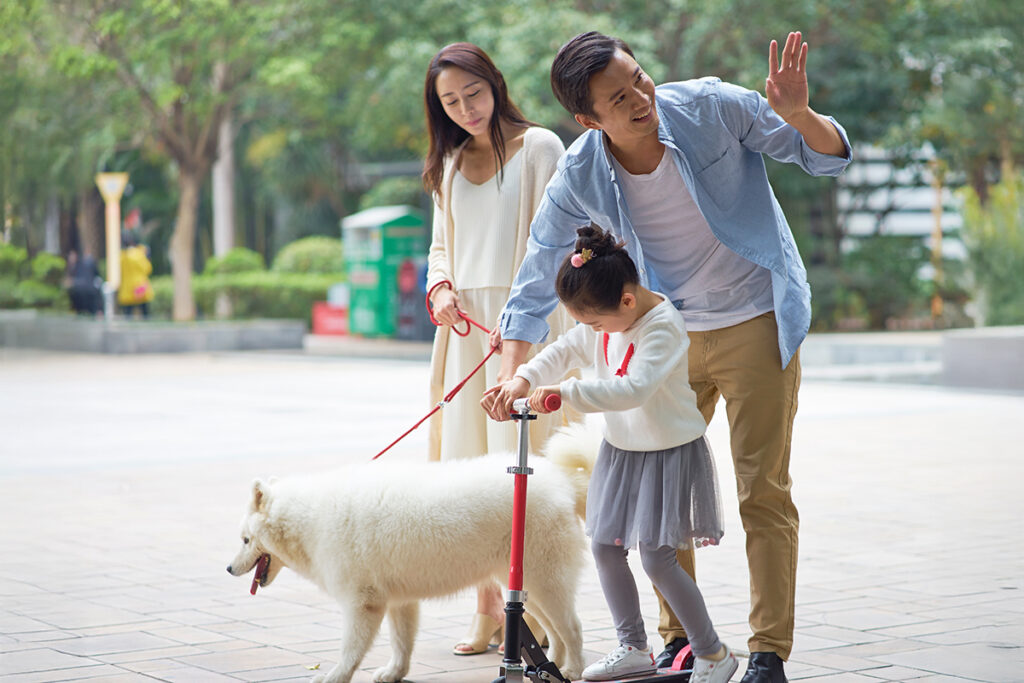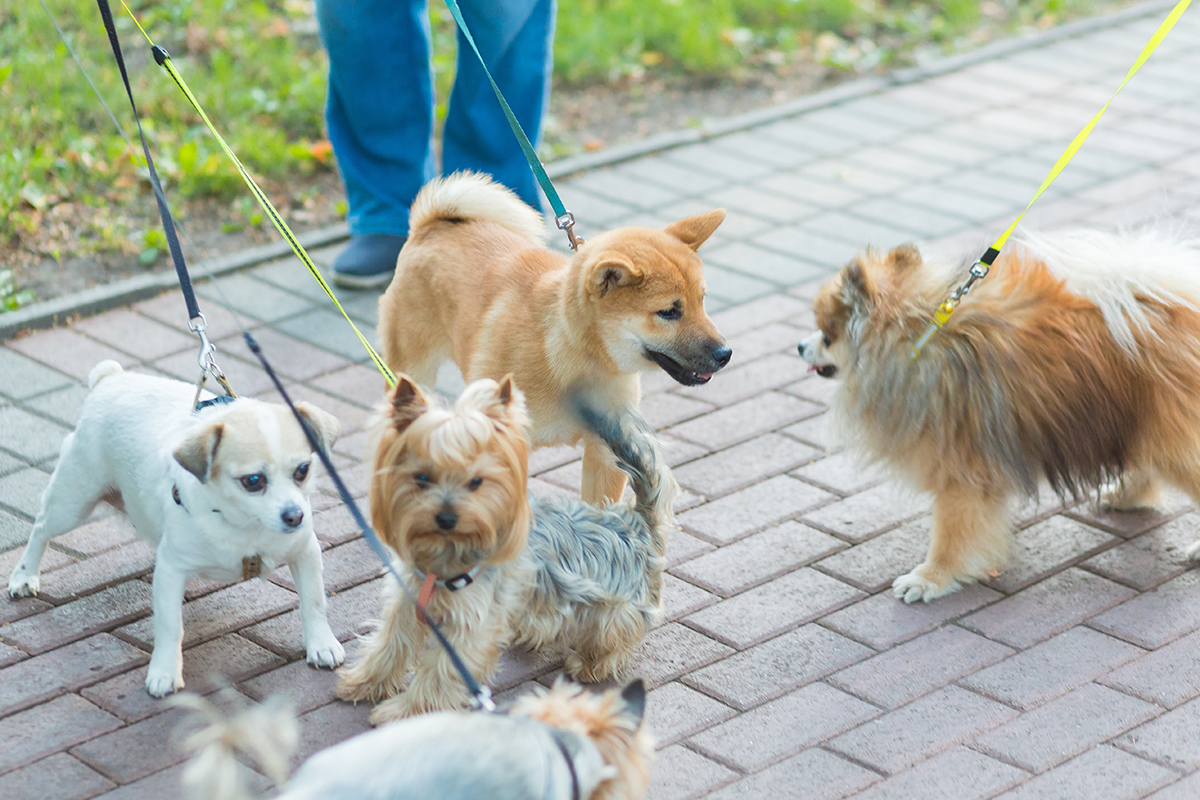How Dogs Connect Communities Across Japan
In Japan, dogs aren’t just pets, they’re companions, local celebrities and part of the social fabric. In a telling sign of the times, pets now officially outnumber children in the country. Of these, 43% are dogs, with toy poodles, chihuahuas and miniature dachshunds topping the popularity charts—small, apartment-friendly breeds that suit Japan’s urban lifestyle.
Once seen primarily as outdoor guardians or working animals, dogs in Japan are now embraced as full-fledged family members. Although older generations of Japanese, especially those living in remote parts of Japan, may still view them as outdoor guard animals, there’s a growing shift from keeping dogs at a distance to welcoming them into the heart of the home, complete with daily routines, custom meals and a spot on the sofa. From medical care to training to everyday affection, these dogs are nurtured and fully integrated into the family unit.

This cultural shift can still be seen through regional textures. In Tokyo, dogs might be spotted in strollers, dressed for the season and posing for social media. In Hokkaido, the loyalty of the native Hokkaido Inu endures, though even this rugged, snow-loving breed is finding its way into family homes as a cherished companion. The Shiba Inu, Japan’s most iconic native breed, evolved from a rugged mountain hunter into a beloved companion and national sweetheart over the last century. Known for their bold independence and “Shiba scream,” they’re often given traditional names such as Sakura or Yuzu, a quiet nod to their place in Japanese identity.
Meanwhile, regions once overwhelmed by stray populations are now leading examples of care and rehabilitation. In Okinawa, where abandoned dogs were once common, organizations such as the Okinawan American Animal Rescue Society (OAARS) have helped thousands of dogs find new homes, many now living with families on the mainland thanks to improved transport regulations and cross-regional adoption efforts. In Kansai, Animal Refuge Kansai (ARK) has created a model of community-based rescue and rehoming, helping dogs not just survive, but thrive as true members of a family. With each adoption and integration, the idea of “pet” continues to evolve toward something more human, emotional and essential.
Growing Bond: How Japan’s Relationship with Dogs Has Evolved
While Japan has long had dogs, the way people care for them has changed dramatically in recent decades. Once seen primarily as outdoor workers or guards, dogs today are treated more like family, joining their owners at cafés, celebrating birthdays with custom cakes and even receiving blessings at shrines. This shift is reflected in the rise of pet cafés, designer boutiques and dog-friendly hotels.
Policy has followed slowly. In 2002, the Japanese Diet passed a bill granting guide dogs full access to public places, a move that brought Japan closer to global accessibility standards. More recently, Tokyo Governor Yuriko Koike prioritized animal welfare through support for spay / neuter campaigns and shelter reform, leading to a notable decline in euthanasia rates.
Still, Japan remains cautious about dogs in public spaces. In Europe, dogs often join their owners at cafés or on public transport. In the U.S., U.K. and Australia, rules are more flexible, though mainly for service animals. In Japan, unless you’re at a pet café or designated dog zone, dogs are typically expected to stay outside or be carried, reflecting deep-rooted values around cleanliness and public harmony.
That said, things are changing. From pet-friendly train cars to cafés with dedicated seating for dogs, Japan is slowly but steadily becoming more inclusive in its own polite and considered ways.
Cherished Companions
As dogs have become full-fledged family members in Japan, the services catering to them have grown increasingly creative and sometimes downright delightful.
Pet travel is one area where Japan’s love of detail shines. From bullet trains with reserved pet compartments to wan wan taxis (that’s “woof woof” in Japanese), getting around with your dog is easier than ever. There are even sightseeing buses and hotel packages that include dog meals and amenities. And in a rare move for Japan, StarFlyer recently began allowing small dogs and cats to fly in the cabin on all domestic routes. It’s a welcome change that’s making long-distance travel with pets more feasible, especially for owners who’ve been hesitant to place their furry companions in the cargo hold. What used to require extensive planning is now remarkably accessible and far more luxurious.

Celebrations have also gone next-level. It’s not unusual to see a dog wearing a party hat at a café, seated in front of a custom-made birthday cake shaped like their face (crafted from dog-safe ingredients of course). Pet bakeries in Tokyo and Osaka offer menus of treats that look good enough to trick a human. Photo shoots are increasingly common, in some cases complete with backdrops and outfits. For foreigners, as well as many Japanese, this may all seem like a bit much, but for dog-lovers in Japan it’s simply part of the joy of sharing life with their beloved member of the family.
How Dogs Bridge Cultures
For many expats in Japan a dog offers more than companionship, it’s a key to everyday connection. Walking a dog sparks friendly exchanges that might otherwise be rare in a culture known for its social reserve. Over time, regular faces at the park or dog run become neighbors, and the local dog-friendly café becomes a stop not just for coffee, but for community.
Dog ownership also brings foreigners into closer contact with Japanese systems and customs such as leash laws, apartment rules and even veterinary care. English-friendly clinics, such as Cross Animal Medical Center in Tokyo, help ease the process for international residents. Meanwhile, many shelters such as ARK and OAARS welcome foreign volunteers and adopters, offering rewarding ways to build bridges across culture and language.
In many ways, dogs act as quiet ambassadors, connecting people in a society where introductions can take time. Often, it’s a tail wag or a shared smile over a curious puppy that opens the door (think of the scene in the 1961 Disney classic 101 Dalmatians where two strangers are brought together by their dogs).

Tails That Tie Us Together
Whether they’re native breeds with ancient roots or rescued strays finding second chances, dogs in Japan reflect a society in motion embracing warmth, connection and a more inclusive view of animal life. The country’s relationship with dogs has grown deeper, more emotional and increasingly woven into daily life.
For foreigners, stepping into this world isn’t just about having a pet, it’s about finding a place in the rhythm of everyday Japan. In a culture where building relationships takes time, a dog often opens the first door, invites the first smile and helps turn unfamiliar neighborhoods into home. Because in Japan today, having a dog means more than companionship. It means community.

